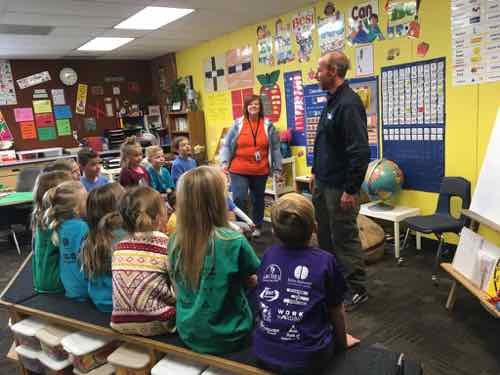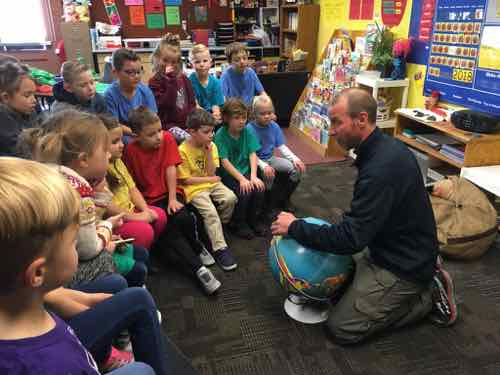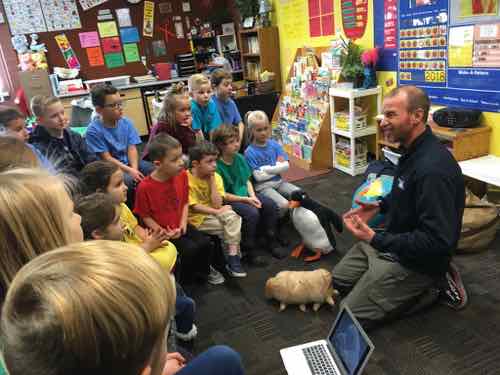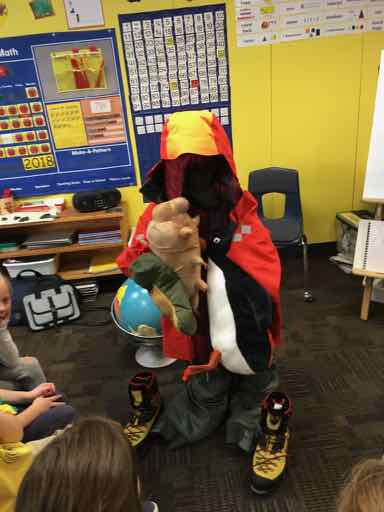Today, I was given an opportunity to visit with energetic, very smart, first-graders from Mrs. Watter's class at Meadow Elementary School in Lehi, Utah. What an adventure! Look at how closely these young scientists are paying attention.
Fun Antarctic facts, most of which they already knew:
Is Antarctica land or ice? Antarctica is a bunch of ice piled up on the 5th largest continent.
Where is Antarctica? Antarctica is down south, also known as the "bottom" of the Earth. That's what I'm showing with the globe to the students.

Are there any living things in Antarctica?
Penguins, seals, and whales are the largest animals found there. These are known as marine animals since they need the ocean to survive.
The most abundant land animals in Antarctica are microscopic, which means you need a microscope to see them. Small little critters like tardigrades (also known as "water bears") and nematodes (worms), are found on land. They can perform one of the coolest tricks of any animals I have ever heard of. They dry themselves out, and freeze up when conditions get harsh. When these animals get warmed up, about to the freezing point of water, they fill themselves back up with water, and come back to life for a few days until conditions get cold again.

How cold will it be, and how will I keep warm?
The temperatures on my expedition will vary greatly. I might have very cold conditions that will reach well below zero with very strong winds. I could also have days that will be above freezing and streams will be flowing in the valleys where we will be conducting soil experiments.
I will be wearing ECW(abbreviation) Extreme Cold Weather clothing (extreme cold weather) gear to prevent hypothermia (getting cold), or frostbite (when skin freezes). Below, you can see James demonstrating how to wear ECW(abbreviation) Extreme Cold Weather clothing gear. He has Antarctic survival pants, insulated climbing boots, polar gloves and mittens, balaclava (which is a beanie that wraps around your whole head except your eyes, goggles to cover eyes, a down coat, and then a shell parka to protect from the wind. I think James looks like an Antarctic explorer.



Comments